Grandia Xtreme Updated Preview
We've got hands-on impressions of Grandia Xtreme for the PlayStation2 from the retail version recently released in Japan.
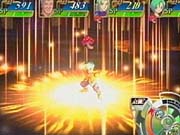
The Grandia series has come a long way since the release of the first installment on the Sega Saturn back in 1997. The game received critical acclaim in Japan, where the press praised its innovative battle system and engaging gameplay. Unfortunately, US gamers weren't able to find out what the fuss was about until two years later, when the PlayStation port finally hit the States. Although the game didn't sell incredibly well, those who played it respected its innovation. The next installment, Grandia II, came out on the Dreamcast in 2000 in the US and Japan and was also recently released for the PlayStation 2 in both territories. As interest in the game has grown, developer Game Arts has moved to widen Grandia's exposure. In Japan, the third installment of the series, entitled Grandia Xtreme, was recently released on the PS2, and we're here to bring you the lowdown on the game.
You will take the role of a novice earth mage boy named Evan, who is forced to lead an investigation to find out what's happening inside natural disasters called elemental overdrives. You can pick three other members--Sgt. Brandol and First Sgt. Carmine of the Notis army; Teit and Lutina from the Alcadas; and Miam from the Hazma tribes--to form a party in every mission. Each of the supporting characters has different strengths and weaknesses. The game is somewhat reminiscent of such role-playing titles as Sting's Evolution on the Dreamcast and Blizzard's Diablo on the PC, in which you have only one town providing you with weapons, spells, and items, while the rest of the world map is made up of dungeons to explore (albeit nonrandomly generated dungeons).
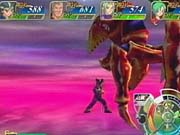
The dungeons are presented from a third-person perspective, as in Eternal Arcadia and Legend of Zelda. On the lower right part of the screen, you'll find the "Xtreme gauge," which signals you that an enemy is nearby. The more the gauge fills up, the more it turns red and trembles, indicating that enemies are stronger. If enemies are not visible nearby, it could also mean that a treasure chest is possibly in the vicinity. You'll be able to make your way through the dungeons in two ways. The game's default movement for your character is a run, but holding on to the X button lets you walk at a slower pace inside the dungeon. You'll probably want to walk most of the time, since it will give you a higher chance of striking enemies first when engaging in battle. If you prefer to take a risk and run through the dungeons, be prepared for enemies to initiate the first strike in combat--and quite often.
When exploring the 3D dungeons, you'll find the camera angles don't seem to catch up to the characters quick enough. As a result, you'll often have to adjust the position of the camera as you are moving inside dungeons. Pressing the L1 or R1 shoulder buttons rotates the camera, while pressing R2 switches the camera direction to where your character is facing. Oddly enough, the controls are pressure-sensitive, so you'll be pressing these shoulder buttons hard most of the time, since the camera rotation is rather slow.
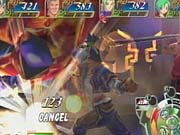
Grandia Xtreme's battle system is the most prominent feature in the game, and it also happens to be the most fun and interesting system in the series to date. The initiative point (IP) gauge is now a circular gauge resembling a clock, but its function works just like it has in previous Grandia games. You'll be able to see icons representing your party and your enemies moving along the gauge, alerting you to who will be attacking next. The basic strategies, like using critical hits to push enemies back on the gauge to cancel their attacks, are still intact as well.
You'll probably invest much of your time using skill scrolls, skill books, and mana eggs to power up your characters' abilities and magic. These can be found in treasure chests or as rewards after battle. Each character has designated slots that limit the number of skill books and mana eggs that can be equipped on them, so you should choose wisely.
The skill scrolls allow you to learn skills once they have been unlocked if you level up the appropriate stats on your character. The skill books provide empty slots for you to equip these skills on your character. Skills will become an integral component in buffing up your character's stats. You'll find that you can upgrade a variety of stats, such as strength and agility, the elemental properties of magic spells, and the ability to perform counters during battle. You will earn skill points after each battle, and this increases the level of the skill you have equipped. Each enemy has a skill category, so if you eliminate enemies with the same skill category that you have equipped, more skill points are rewarded.
On the other hand, mana eggs require far less maintenance, since they already contain magic spells for you to cast. Although you can't add magic spells to those bestowed by a mana egg, you can combine two mana eggs to create a more powerful one. You will then be able to use higher-level magic spells, as well as cast other spells consuming fewer magic points. While characters don't have a set number of magic points, each mana egg will have its own set of available mana points, which you can draw from to cast spells.

Lastly, each character will be able to learn special attacks during battle. As you use a particular special attack more often, it will earn levels, which in turn will let you learn new ones. The higher the level, the shorter the turnaround to use it will be during battle. You can also learn special group attacksthat involve two or three other party members. You'll find that group attacks are more likely to be learned when character icons on the IP gauge are on top of each other in battle. They are far more powerful than the normal special attacks. Keep in mind that all the characters will have to replenish their own special attack points (SP) during battle by performing basic attacks, as they will have no SP when first entering a dungeon.
You will receive different types of bonuses during battles as well. The "combo bonus" happens when you perform combo hits on enemies during battle. The bonus will let you inflict higher damage than your basic attacks. "Elegant bonus" rewards you with more experience points when your party wins a battle without receiving any damage from enemies. "Special attack bonus" rewards you with more skill points when your character(s) finish off the last enemy with a special attack.
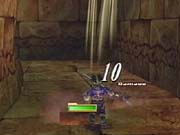
While the battle system sounds like a recipe for fun, there are two things about the game that keep it very challenging. First, you can only unlock skill scrolls, equip skills on to books, and combine mana eggs when you are inside town. Second, and more important, you can save your game's progress only when you are inside town. While the first few dungeons are not terribly long and complex, it can still be frustrating when you have died and are forced to start again from your last save. However, you'll find certain spots--called "geo points"--inside dungeons, which is indeed a saving grace. These points let Evan open up "geo gates," which are essentially town portals. You'll find yourself going back and forth through these portals quite often throughout the entire game.
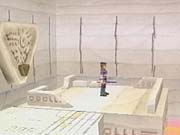
The creator behind the Grandia series has emphasized that Xtreme's battle system makes the whole experience more fun and intuitive game. While we've enjoyed the battles throughout the course of our gameplay session, everything else has been quite disappointing so far. The visuals of the game are only slightly better than those of its predecessors, but they don't really surpass what we've seen in recent games on the PlayStation 2. While certain dialogue sequences feature voices, you'll find yourself relying on the small face icons near the dialogue text box to get a sense of the character's emotions, since the in-game polygon models stare blankly during the voice acting.
The soundtrack in Grandia Xtreme is also proving to be the most disappointing of the entire series as well--it offers generic tunes that don't quite capture the epic feel of the music in the previous games. Fortunately, players will find a lot to appreciate in the game's excellent battle system. Grandia Xtreme for the PlayStation 2 is currently available in Japan, while a North American release has not yet been announced.
Got a news tip or want to contact us directly? Email news@gamespot.com
Join the conversation